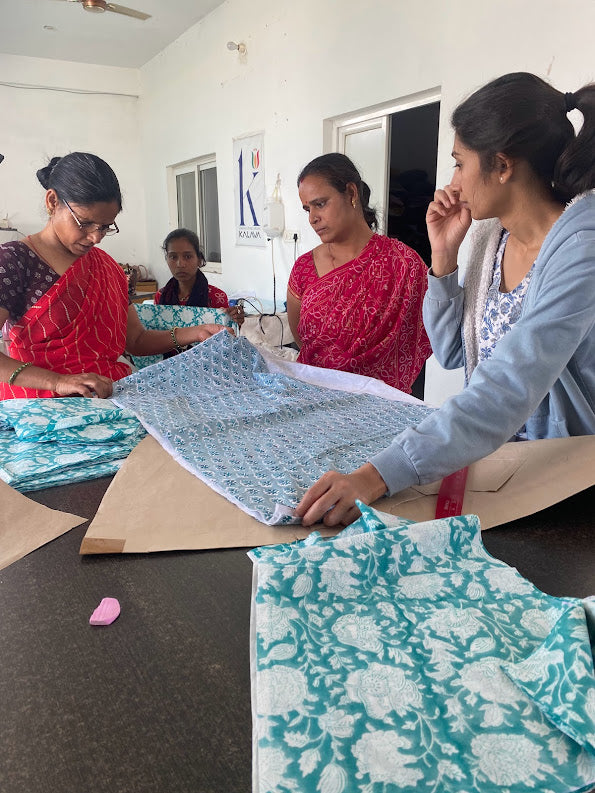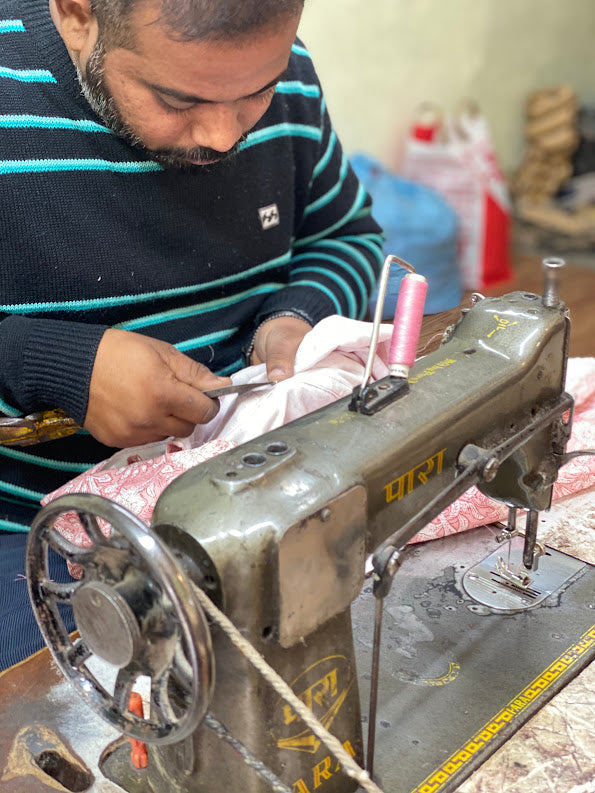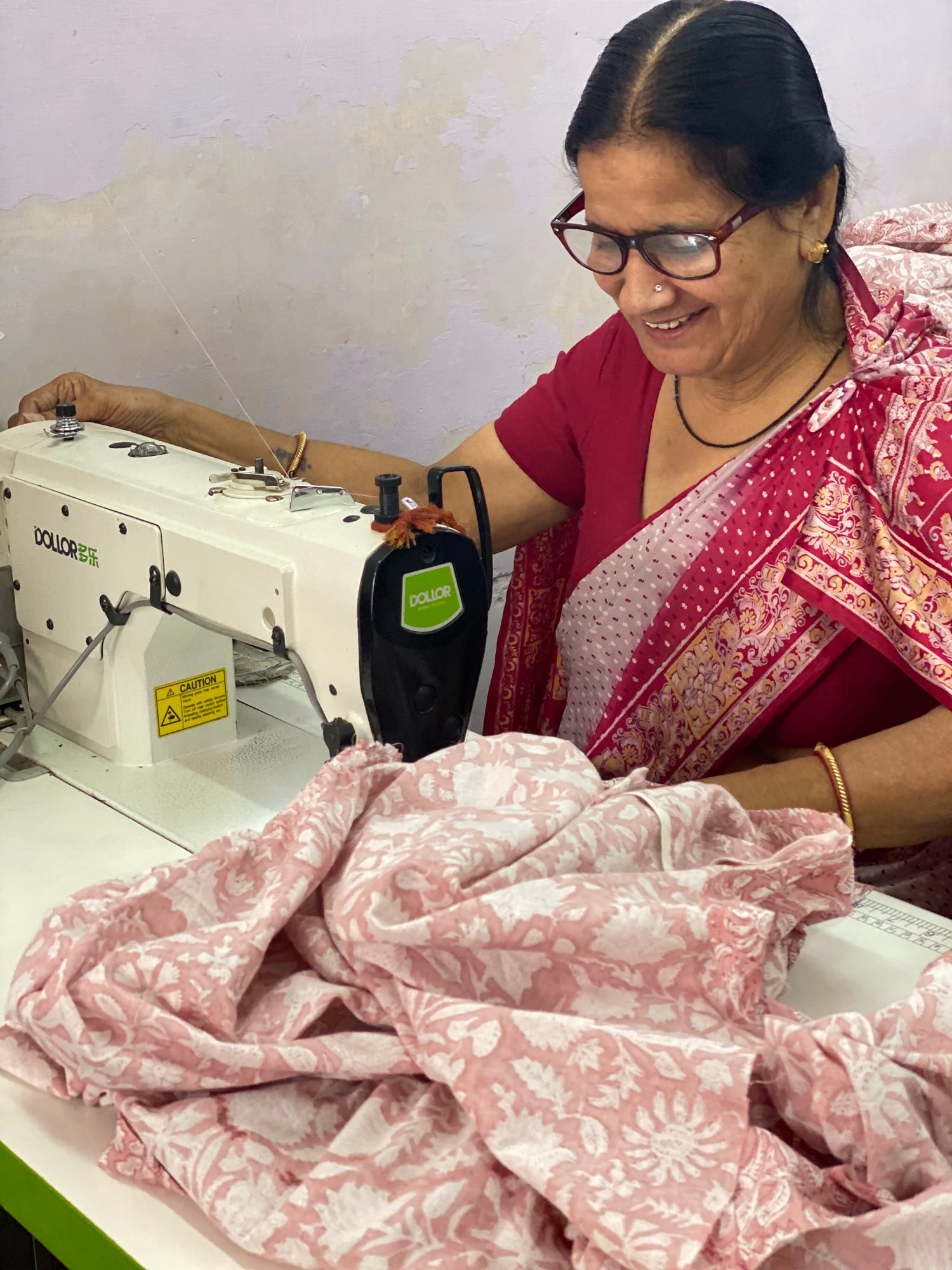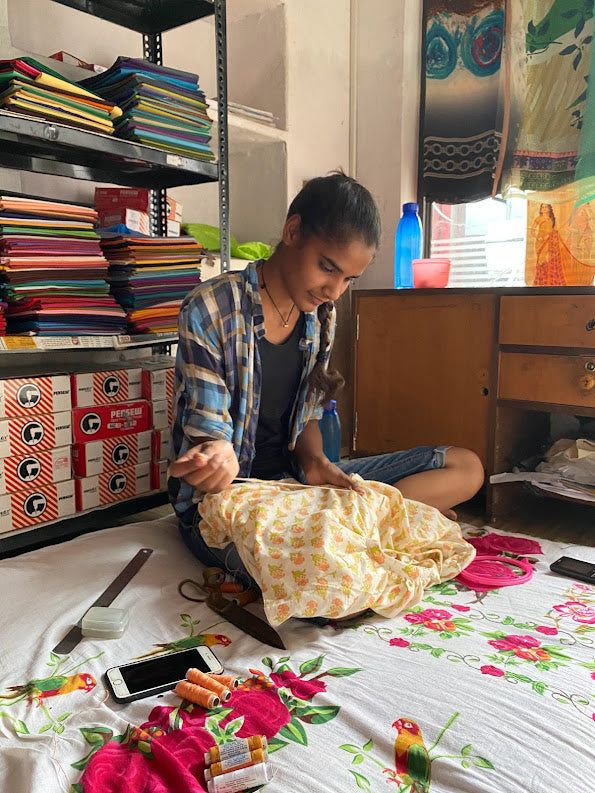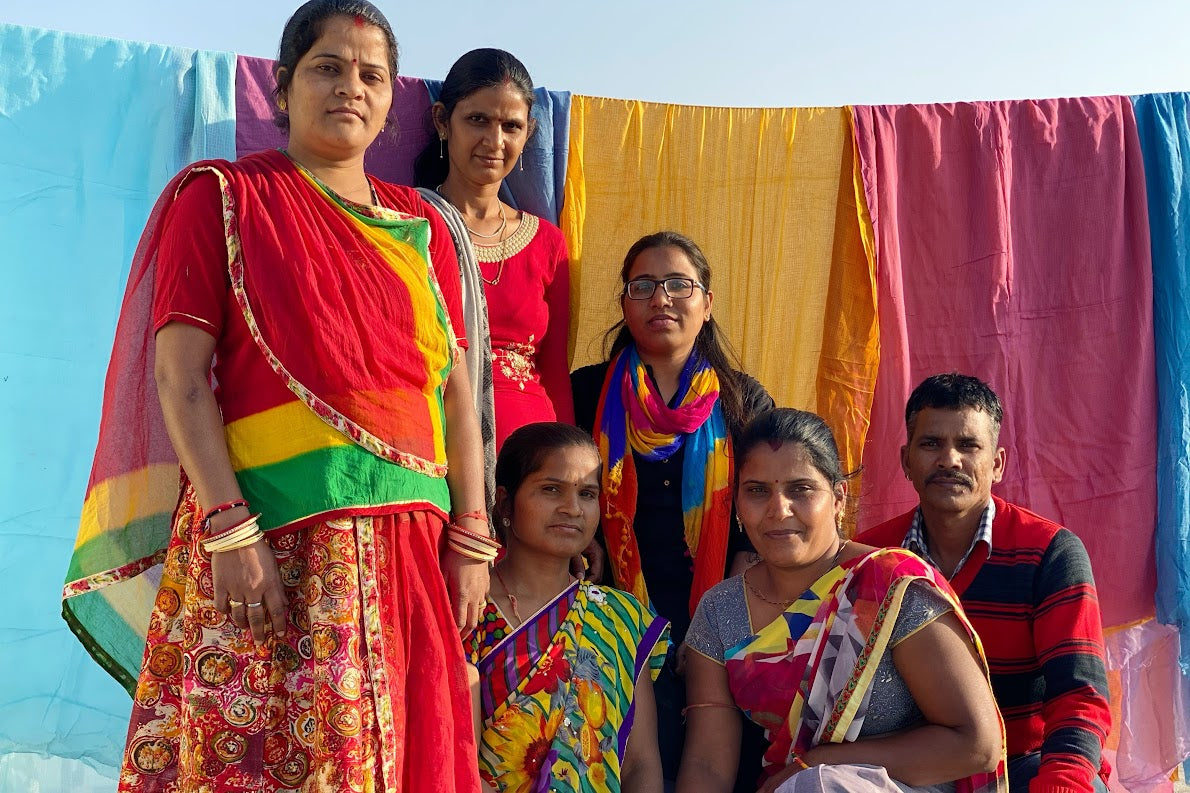Techniques

The smaller or more detailed the print, the more intricate the knot-work has to be.
Meet some of the people who make Wray happen
Kalava Crafts
Madan ji and Sagar
Bunty
Meena
Mewar Dharohar
Our principle producer, Kalava Crafts was founded in 2014 by Madhu to help provide employment opportunities to women artisans.
Located in Udaipur, Kalava Crafts works with 125 women's artisans including tribals and marginalised & disadvantaged groups. By working closely with traditional weavers, designers and artisans, Kalava Crafts strives to place Indian craft at the forefront of the design world.
Madan-ji worked 20 years as the shop tailor for a family business until he started his own shop that he runs with his son Sagar. Over the years working together, we've seen them grow from a tiny shop in a small street in the Old City to a bigger showroom on the main road near the City Palace.
Bunty had worked as a shop tailor for a handicrafts emporium before opening his own tailoring shop just down the street from Madan ji. It's a full family affair as his wife and mother works alongside him.
Meena is a university student that worked on the hand embroidery for all our collections so far. With Covid shutdowns affecting schools and disrupting her studies, working on our pieces while she’s at home helps her contribute to supporting her family.
We worked with Mewar Dharohar to produce our first two collections. Led by Moti and his wife Manoharee, Mewar Dharohar employs women in communities within the city of Udaipur and in the villages of Thoor and Barodiya. By creating employment close to their homes, Mewar Dharohar empowers women to earn income without having to leave their families and move to large garment making cities.
